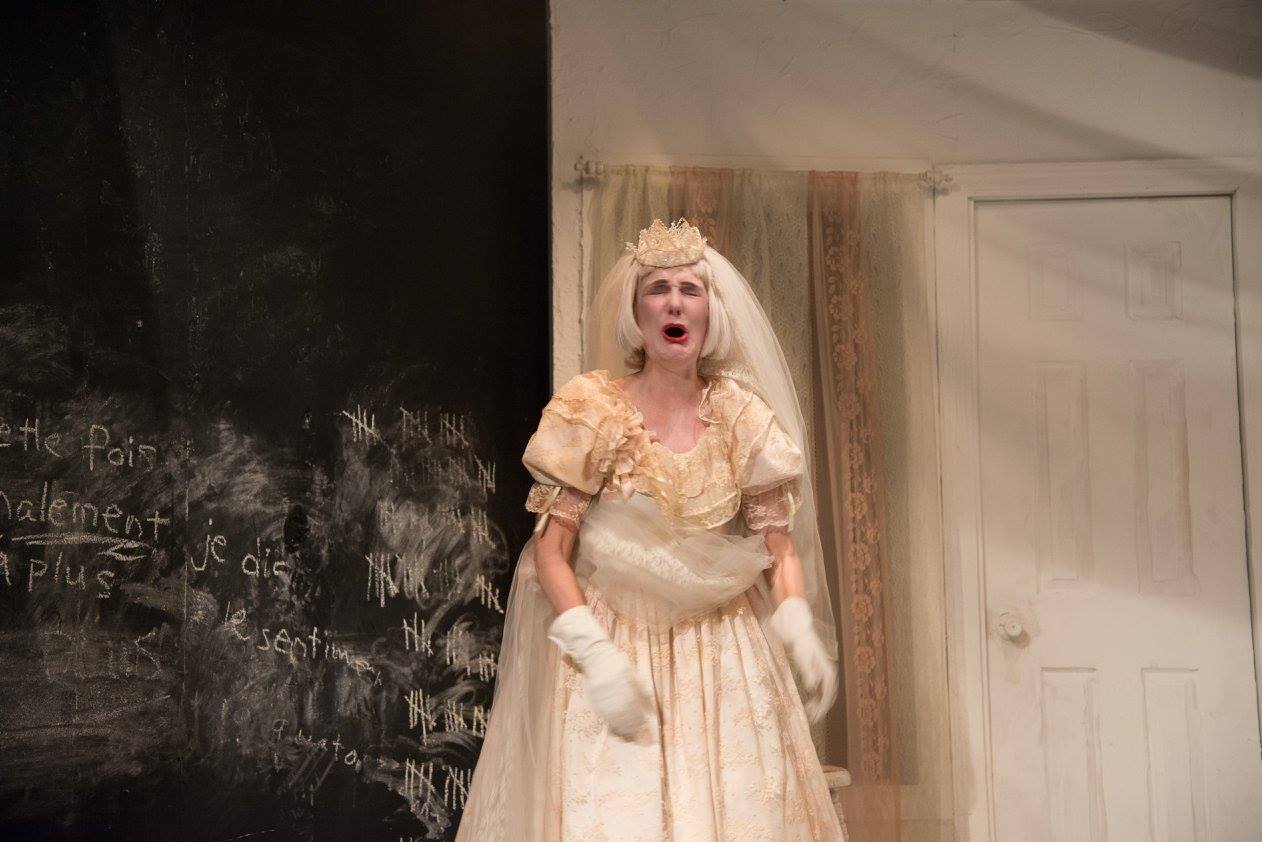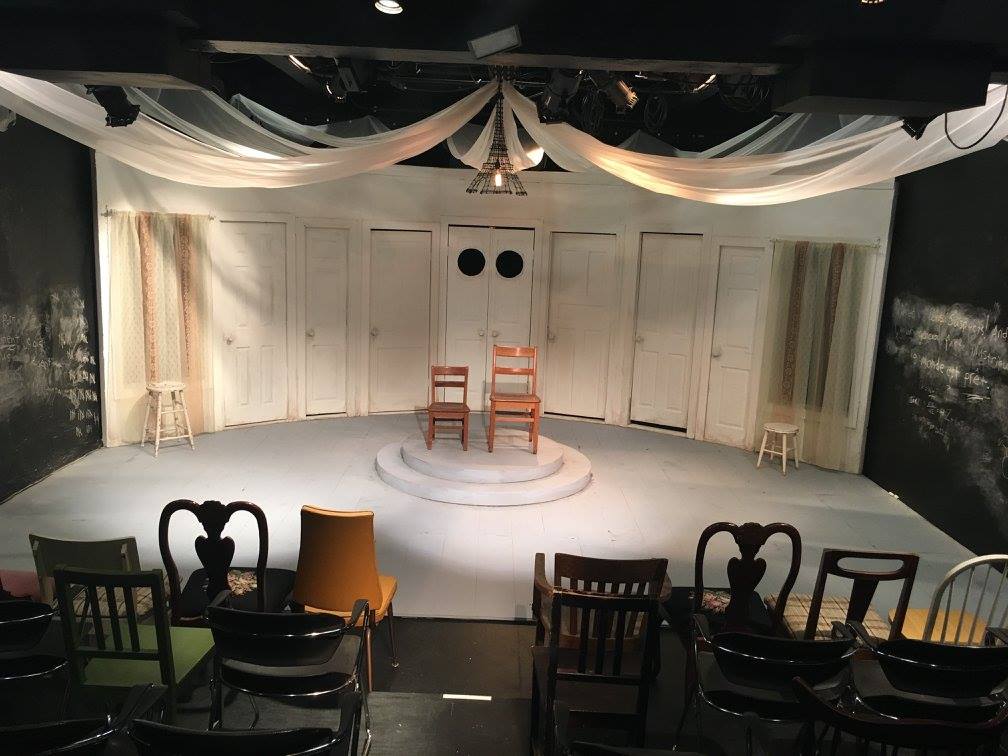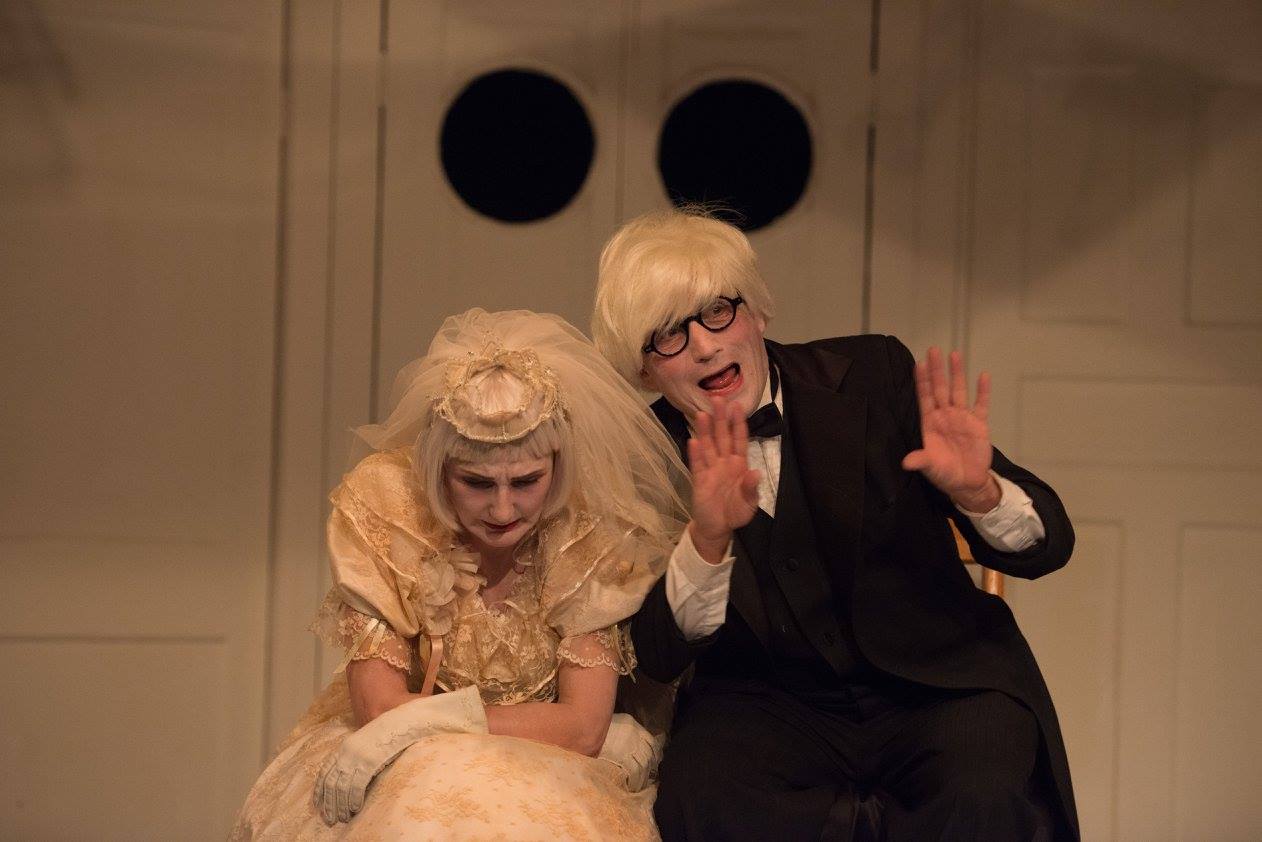The Idiopathic Ridiculopathy Consortium brings Eugene Ionesco’s hilarious, controversial, absurdist classic THE CHAIRS to the 2016 Fringe Festival. We talk to director Tina Brock about the show.

Henrik Eger: What draws you to Ionesco in general and to his CHAIRS in particular?
Tina Brock: It’s great fun to direct and perform his work, as he is asking for total commitment to the emotional choice, pushed to paroxysm. He takes situations to the extreme to illustrate a point. His sense of comedy and tragedy in grappling with the existential dilemma is wonderfully balanced. Ionesco finds hilarity in human foibles, the games we play to bring meaning to our short time on this earth and our tendency to defend our day-to-day decisions with great ferocity. Dismantling the ego can be hilarious—a recurring theme in Ionesco’s work.
Eger: Ionesco’s masterpiece premiered in Paris in 1952, where it saw more productions in the years to come. The English-speaking world did not take to his work enthusiastically until decades later. What do you think accounts for that initial resistance?
Brock: Participation in an Ionesco event is more like a sport. There is great stimulation, so much coming at you—sound, lights, emotion, language. It requires letting the experience hit you without trying to analyze each moment, which can be frustrating. At the same time, in a small venue, The Chairs is akin to watching a World Wide Wresting match. Ionesco doesn’t write the well-made play with a tidy ending and characters that immediately make sense to us. There is work involved in being an Ionesco audience member, which may be more than people want to sign up for when paying admission. For me, Ionesco serves it all up on a pretty nice platter. It’s active, emotional, funny, tragic—and all very relevant.
Eger: THE CHAIRS could be seen as an attempt to bring hope to a post-WWII society. Tell us about the things you did to convince the audience that the guests, symbols of life and survival, have arrived—even though we never see them.
Brock: Making each of the imaginary people real to us was useful. At times we had performers stand in so we could play the scenes with real people, and then imagine them in that position. When I was a kid, I’d line up all the dolls on the bed and deliver an overblown lecture about some meaningless thing I was interested in. It felt very much like those days.

Eger: I heard that IRC went so far that your designer actually had a casting call for the chairs. Is that true, or only a piece of surreal theater rumor?
Brock: Yes, it’s true. Set designer Lisi Stoessel actually had a casting call for the chairs in the show. We selected the ones that conjured types of people, and then attached an imaginary person to the chair. Since the audience members only see the chairs on stage, it’s important they leave an indelible mark—that they become the people. Ionesco wrote that the proliferation of objects was a powerful theatrical tool. This concept works to maximum effect in THE CHAIRS.
Eger: Ionesco introduces a living orator on stage, but, unbeknownst to the audience, makes him deaf and mute. How did you handle this complex situation?
Brock: It’s important that the Orator understands what he is trying to say and communicate that with all his will. He doesn’t anticipate that he will not be understood, so Tomas Dura must play the importance of delivering the Old Man’s message with as much clarity and stakes as he can.
Eger: What do you see as the overall theme in Ionesco’s plays, and in THE CHAIRS in particular?
Brock: Ionesco’s ongoing theme in his works—about how language, both written and spoken, can be a faulty tool for communicating real meaning—is evidenced in this play in many ways. The meaning between two people in a conversation is largely shared through the emotional content in the conversation—the nonverbal responses and the tone of the conversation. Ironically, the emotional communication in the play is easier to latch onto as a through line, since there is fairly universal understanding of what those emotions are.
Eger: Tell us more about the use of emotion versus the analytical in this play?
Brock: As long as we are clear in our delivery, the audience will be able to follow what we are feeling about the moments—one reason you can see this play performed in any language and understand what is transpiring. These characters don’t spend a lot of time analyzing their thoughts or situations—they simply feel a certain way and they act on that feeling. Ionesco uses some fun examples in THE CHAIRS of the potential banality of cocktail party conversations, the breaking down of communication, which seems particularly appropriate in this time.
Eger: Sexuality is no longer as big a taboo in the US as death and suicide, especially in a society that constantly pushes permanent “improvement and growth”—not allowing anyone to leave this life of their own volition, including aging couples in their suicide attempts. How do you interpret this complex situation in THE CHAIRS?
Brock: There is a lovely story in the play of the woman convincing the man that his message is important, and that “he has no right to keep his message from the universe.” I love this aspect of the play—that we have a duty to use our talents, to share them with the world, to teach others, and to live as a clean burning engine if you will—that we have gifts that want to be revealed to the world, and that it’s our own egos getting in the way of stopping ourselves from following the path.

Eger: Could you give an example?
Brock: Sure. It’s a hilarious turn that once the Old Man decides he will share his message that he then doesn’t have the confidence to tell his own story and hires a surrogate. The Old Woman then becomes very afraid of the thing she set into motion—that what she wished for complicated their very simple humble existence.
The old couple reach this conclusion in the play—that their stories have been told, that they have achieved their goals, and that they can now depart in good conscience. What’s disturbing is that Ionesco entrusted this important message to a character who wasn’t able to articulate it well.
Eger: Ionesco wrote how all-important the ending of his play was, even though it’s the exact opposite of a tangible conclusion, when he wrote, “The last decisive moment of the play should be the expression of . . . absence.”
Brock: Ionesco gives clear instruction on the final sound cue, aided in large part by a set filled with empty chairs and haze—breeze blowing.
Eger: Could you share some hilarious moments with us that occurred during your rehearsals?
Brock: Hardly hilarious, but appropriately ridiculous. I developed shingles early in rehearsal. Imagine trying to cart around 50 chairs on stage in two and a half minutes with crazy nerve-ending pain. It’s not a situation that clears itself quickly. We’re laughing now, though it wasn’t too funny at the time.
And every night there’s the show going on backstage—a very small space, which stores all the chairs: our chair wrangler, Sam Eli, and the Orator, Tomas Dura, and I, all tripping over one another to get every single chair on stage in a very short time. A classic Three Stooges Routine every night. Seriously, we are going to tape it, it’s so ridiculous.
Eger: What have you planned for IRC, Philadelphia’s surreal theater, for the 2016 fall and winter season?
Brock: David Ives’ Lives of the Saints at L’Etage in November, and Jean Giraudoux’s The Enchanted at Walnut Street Theatre Studio 5 in February 2017.
Eger: Is there anything else you would like to share?
Brock: It’s frustrating that Ionesco gets characterized as “silly” by some people. His dramas are anything but—particularly in this day and age. Thank you for your thoughtful interview—you’re a toughie. I appreciate your probing questions as THE CHAIRS is not only a hilarious, but a thought-provoking play.
Eger: Tina, the real toughie is the artistic director with shingles who, after auditioning chairs as if they were actors, then, with the help of cast members, schlepped around all 50 chairs—in rehearsal after rehearsal.
[Walnut Street Theatre Studio 5, 825 Walnut Street] September 6 –25, 2016; fringearts.com/eugene-ionesco-chairs.
